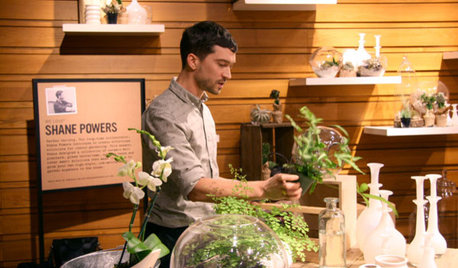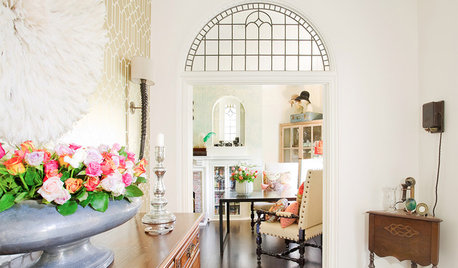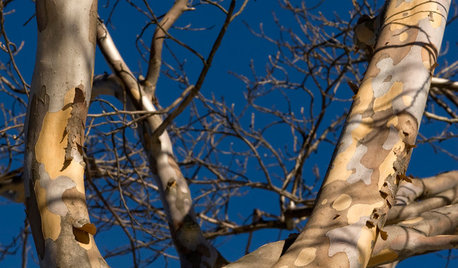lace bark elm
vancleaveterry
16 years ago
Related Stories

URBAN GARDENSOne Fern Day
Think terrariums are tiresome? Unusual containers and unexpected greens yield surprising offshoots
Full Story
GROUND COVERSGround Force: 10 Top Ground Covers for Your Garden
Protect your soil from weeds and drought this summer with a living mulch of ground covers
Full Story
GARDENING GUIDESTree Care: Common Tree Diseases and What to Do About Them
Learn to recognize trees that may be affected by diseases or pests so you can quickly take action
Full Story
DECORATING GUIDESHouzz Tour: Arts and Crafts Cottage Gets a Lively Remake
An interior designer uses color, light and historical touches to brighten up a 1920s Sydney home
Full Story
FALL GARDENING6 Trees You'll Fall For
Don’t put down that spade! Autumn is the perfect time for planting these trees
Full Story
ROOM OF THE DAYRoom of the Day: A Playful Palm Springs Style in L.A.
The great room in Kelly Oxford’s 1960s Los Angeles home combines a monochromatic palette with bursts of color — and quirky touches
Full Story
WINTER GARDENING8 Gorgeous Trees for Winter Interest in the Garden
Intriguing forms and beautiful branches take center stage when color heads back into the wings of the winter landscape
Full Story
LANDSCAPE DESIGN7 Great Trees for Summer Shade and Fall Color
These landscape-pro faves straddle the seasons beautifully. Could one enhance your own yard?
Full Story
GARDENING GUIDESNew Ways to Think About All That Mulch in the Garden
Before you go making a mountain out of a mulch hill, learn the facts about what your plants and soil really want
Full Story
FALL GARDENING5 Ways to Put Fall Leaves to Work in Your Garden
Improve your soil and yard the organic way with a valuable garden booster that grows on trees
Full StoryMore Discussions







alabamatreehugger 8b SW Alabama
Embothrium
Related Professionals
Simpsonville Landscape Architects & Landscape Designers · Oconomowoc Landscape Architects & Landscape Designers · Eustis Landscape Contractors · Gainesville Landscape Contractors · Melrose Landscape Contractors · Nutley Landscape Contractors · Overland Park Landscape Contractors · Billings Siding & Exteriors · Lafayette Siding & Exteriors · Rochester Siding & Exteriors · Billerica Decks, Patios & Outdoor Enclosures · Fort Worth Decks, Patios & Outdoor Enclosures · Liberty Decks, Patios & Outdoor Enclosures · New York City Decks, Patios & Outdoor Enclosures · Provo Decks, Patios & Outdoor EnclosuresvancleaveterryOriginal Author
justintx
Carrie B
kman04
Iris GW
Iris GW
vancleaveterryOriginal Author
tdsmith_gw
alabamatreehugger 8b SW Alabama
Iris GW
alabamatreehugger 8b SW Alabama
kman04
alabamatreehugger 8b SW Alabama
Dibbit
mongoosejames
lou_spicewood_tx
quirkyquercus
vancleaveterryOriginal Author
alabamatreehugger 8b SW Alabama
quirkyquercus
MissSherry
vancleaveterryOriginal Author
MissSherry
quirkyquercus
quirkyquercus
MissSherry
vancleaveterryOriginal Author
quirkyquercus
MissSherry
alabamatreehugger 8b SW Alabama
MissSherry
alabamatreehugger 8b SW Alabama
vancleaveterryOriginal Author
quirkyquercus
quirkyquercus
MissSherry
alabamatreehugger 8b SW Alabama
vancleaveterryOriginal Author
MissSherry
vancleaveterryOriginal Author
vancleaveterryOriginal Author
dr_andre_phufufnik
quirkyquercus
MissSherry
Fledgeling_
alexander3_gw
MissSherry
Fledgeling_